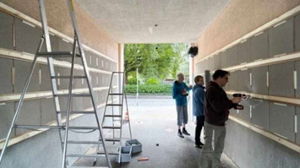Tesla joins Waymo, Cruise, Baidu Apollo Go, WeRide, Pony.ai, and May Mobility in what is now shaping up to be the most thrilling leap in transportation history—the long-awaited launch of robotaxi services that promises to turbocharge the future of travel. This is not just an upgrade in mobility. It’s a disruptive shift that will redefine how US tourists explore, commute, and connect with cities.
The wait is finally over. Tesla, after years of anticipation, has jumped into the driverless arena, joining forces—directly or indirectly—with the biggest names in autonomy like Waymo, Cruise, Baidu Apollo Go, WeRide, Pony.ai, and May Mobility. And they’re not just experimenting—they’re deploying. They’re rewriting the map of urban navigation.
What does this mean for the everyday US tourist? Everything. Whether it’s a robotaxi waiting curbside in Austin or a seamless ride across San Francisco, the future of travel is here, humming silently and moving without a driver.
Each of these trailblazing companies—Tesla, Waymo, Cruise, Baidu Apollo Go, WeRide, Pony.ai, and May Mobility—brings unique strengths, but together they create one unified promise: smarter, faster, autonomous journeys that blend innovation with the magic of discovery.
As this new update unfolds, curiosity builds. What’s it like to ride a robotaxi? Can it really replace traditional taxis? Is this the new gold standard for US tourists?
Buckle up—because the world of travel just hit autopilot.
The future of travel took a massive leap forward on June 22, 2025, when Tesla officially entered the robotaxi arena, joining forces with other global leaders like Waymo, Cruise, Baidu Apollo Go, WeRide, Pony.ai, and May Mobility. The moment was years in the making—and it’s arriving just as the world’s mobility needs are rapidly evolving.
Tesla’s robotaxi debut in Austin, Texas, brought an immediate response. The market reacted with a 10% surge in Tesla’s stock price, adding nearly US$100 billion in value. But this wasn’t just a financial milestone. It was a clear signal that urban mobility is transforming, and US tourists are about to experience a radically new way to move.
This launch comes at a crucial time for Tesla. With profits down by 71% year-on-year and BYD dominating the global EV sales race, Tesla is betting big on autonomy as its next growth engine. The robotaxi service, though still in pilot stages with human safety monitors on board, is Musk’s answer to both financial pressure and evolving market demands.
For the travel industry, this signals a major shift. Tesla isn’t just making cars anymore—it’s building the infrastructure for on-demand urban transport, powered by AI and electric efficiency.
For US tourists, especially those visiting cities like Austin or San Francisco, Tesla’s robotaxis will offer more than just a cool ride—they represent the beginning of a smarter, smoother, and potentially more affordable travel experience.
Imagine stepping off a flight and being picked up by a silent, driverless Tesla that knows your hotel, adjusts temperature to your preference, and glides through traffic using real-time navigation and predictive routing. No app-based surge pricing. No language barriers in foreign destinations. Just seamless, intelligent travel.
It’s not just convenience—it’s the reimagination of mobility. And it’s not just Tesla doing it.
Tesla’s entry is part of a much larger story. Around the world, robotaxi services are launching at speed:
Together with Tesla, these companies are building the foundation for a global robotaxi revolution. What used to be a tech dream is quickly becoming part of everyday travel.
Tesla’s robotaxi rollout has energized markets, but major challenges remain. Execution risk is high, especially with competitors like BYD developing faster-charging, lower-cost autonomous vehicles. Regulatory frameworks for robotaxis are still evolving, and global expansion will require local partnerships and trust.
Still, the opportunity is massive. For cities, robotaxis could reduce congestion and pollution. For travelers, they offer comfort, safety, and on-demand efficiency. And for the travel industry, robotaxis open new doors—from AI-powered tours to integrated hotel transport services.
Tesla’s robotaxis are just one lane in a much larger freeway toward the future of travel. But with its global brand, tech innovation, and renewed leadership focus, Tesla has re-entered the race—fast and focused.
From a tourism standpoint, robotaxis could become as important as airplanes, trains, or hotels. Travelers will expect autonomy, personalization, and sustainability in how they move. Tesla’s move signals that automated travel is no longer a luxury—it’s the new standard.
Hotels will adapt. Tour operators will innovate. Airports may rethink curbside design. And travelers? They’ll start experiencing cities not through rearview mirrors—but through smart, driverless journeys that redefine what it means to explore.
The future of travel has arrived. It doesn’t have a driver. It doesn’t need directions. And it’s not science fiction anymore. Around the world, robotaxi services are hitting the streets, transforming how people commute, connect, and explore.
From Tesla’s bold launch in Austin to Waymo’s growing urban footprint and Baidu’s international ambitions, autonomous vehicle technology is racing ahead—and it’s no longer just about getting from point A to B. For the travel industry, it’s the beginning of a mobility revolution that will reshape tourism, airport transit, city navigation, and eco-conscious travel experiences forever.
On June 22, 2025, Tesla kicked off its long-awaited robotaxi service in Austin, Texas. It’s a soft launch for now—invite-only, geofenced, and monitored—but it marks the first time Tesla’s Full Self-Driving system is officially being used for commercial ride services.
While Tesla has been promising robotaxis for years, this launch proves the company is serious about leading the next chapter in urban travel. Passengers are picked up by autonomous Model Y vehicles for a flat fare, initially with safety drivers on board.
It’s a crucial first step in Elon Musk’s vision to make robotaxis a central part of Tesla’s future—and it’s already stirring major curiosity in the travel and tourism world. Could robotaxis soon handle hotel transfers, airport pickups, or sightseeing loops? With Tesla now in the game, that future feels closer than ever.
Meanwhile, Waymo, the self-driving unit of Alphabet (Google), has quietly become a dominant force in autonomous travel. Its robotaxis have been operational in Phoenix, San Francisco, and Los Angeles, and are now available in Austin as well. The biggest news? Riders can now book Waymo rides through the Uber app, merging traditional ride-hailing with cutting-edge autonomy.
Waymo’s approach is methodical but powerful. The company has logged over a million autonomous miles and is scaling operations into major U.S. hubs including Atlanta, Washington D.C., and New York. For tourists in these cities, the chance to hop into a fully autonomous ride could become a memorable part of the travel experience.
Whether it’s a quick ride to a Broadway show or a seamless trip from hotel to airport, Waymo is pushing autonomous travel into the mainstream.
Across the globe, China’s Baidu is setting records. Its Apollo Go robotaxi fleet now operates in major Chinese cities like Wuhan, with over 400 fully driverless vehicles on the road. It’s not just about China, either—Baidu has already set its sights on global expansion.
By the end of 2025, Baidu plans to roll out services in Singapore, Malaysia, Turkey, and Switzerland, making it one of the most globally ambitious players in the autonomous space. That means international travelers could soon hail a Chinese robotaxi in the heart of Europe or Southeast Asia.
For the tourism industry, Baidu’s expansion presents new opportunities—especially in countries looking to boost sustainable, smart-city infrastructure. Cities embracing Baidu’s tech could become hotspots for next-gen travel experiences.
Also in China, WeRide is making waves with robotaxi and shuttle services in Beijing, Guangzhou, and Abu Dhabi. Through strategic partnerships—including with Uber—WeRide is extending its reach into Europe and the Gulf region.
Meanwhile, Pony.ai is rolling out driverless services in California and Chinese megacities, while May Mobility, based in the U.S., is bringing autonomous shuttles to Ann Arbor, Peachtree Corners, and soon, Tokyo and Nagoya. Their focus? Urban tourism and short-distance commuting.
Each of these players is carving out a unique slice of the robotaxi revolution—and as they expand, they’re opening up new, frictionless travel experiences in urban destinations across continents.
The rise of robotaxis doesn’t just represent a tech milestone—it’s a monumental shift in the way people travel and explore. Think about it:
And with their zero-emissions electric engines, robotaxis align perfectly with the push toward sustainable tourism.
Despite their promise, robotaxi services aren’t without hurdles. Regulatory approvals vary widely across countries. Many regions still require safety drivers. Insurance frameworks, liability standards, and consumer trust are evolving slowly.
Moreover, different cities present different technical challenges—narrow roads in Europe, unpredictable traffic in India, and cybersecurity threats in urban grids. And public perception remains divided: some travelers are excited, others hesitant.
For forward-thinking travelers, robotaxis represent a new layer of adventure. Booking a Waymo in Los Angeles, riding a Tesla robotaxi in Austin, or experiencing a Baidu autonomous ride in Singapore could soon be as easy as ordering a latte.
And for the travel industry, the message is urgent: adapt or get left behind. Tour operators, hotel chains, city planners, and destination marketers must prepare to integrate this wave of autonomous mobility into the guest experience.
The revolution is not just coming—it’s here. The only question now is where it will take us next.
























